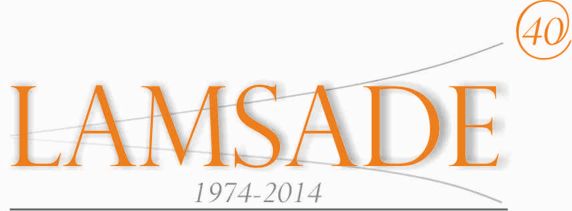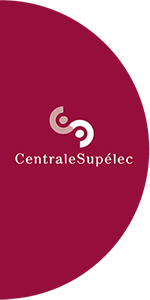Tutorial at IJCAI 2016 
Symbolic and structural models for image understanding
Jamal Atif, Isabelle Bloch, Céline Hudelot






Date: Sunday July 10th, 8:45-10:30 and 11:00-12:45
Abstract:
In this tutorial, at the cross-road of artificial intelligence and visual information understanding,
symbolic and structural models for high level image and scene understanding will be presented,
including knowledge representation and reasoning methods. Examples in medical and satellite imaging
will illustrate these methods.
Speaker biographies:
-
Jamal Atif is a Professor of Computer Sciences at Université Paris-Dauphine performing his research
at LAMSADE (CNRS mixed unit). From 2010 to 2014, he was an associate professor at Université Paris-
Sud 11, member of the Machine Learning and Optimisation Team (INRIA/CNRS/Paris-Sud) and served as its
co-head from 2013 to 2014. From 2006 to 2010, he was a research scientist at IRD (Institut de
Recherche pour le Développement), Unité ESPACE S140 and associate professor of computer sciences at
the University of French West Indies. He received a master degree and a PhD in computer sciences and
medical imaging from Université Paris-Sud in 2000 and 2004. His research interests focus on AI-based
methods for image understanding, knowledge representation and reasoning, machine learning and brain
imaging. He works on fields arising from mathematical morphology, graph theory, uncertainty
management, logics and information theory. He was the co-advisors of three PhD students and is
advising or co-advising five PhD students.
Some of the courses given by Jamal Atif are in direct relation with this tutorial proposal: Image
understanding, Robotic vision, logical approaches for image interpretation. All these courses were or
are given at a master degree Level.
Since September 2014 Jamal Atif is serving as a director of the Business Intelligence program of Paris-
Dauphine University.
-
Isabelle Bloch is graduated
from the Ecole des Mines de Paris, Paris,
France, in 1986, she received the Master's degree from the University
Paris 12, Paris, in 1987, the Ph.D. degree
from the Ecole Nationale Supérieure des Télécommunications
(Telecom ParisTech), Paris, in 1990, and
the Habilitation degree from the University Paris 5,
Paris, in 1995.
She is currently a Professor with the Image Processing and Understanding
Group, LTCI, Telecom ParisTech.
Her research interests include 3D image and object understanding,
computer vision, artificial intelligence, 3D and fuzzy mathematical morphology, information
fusion, fuzzy set theory, structural, graph-based, and knowledge-based object
recognition, spatial knowledge representation and reasoning, and medical imaging.
She has numerous collaborations with academic and industrial teams, as well as with university
hospitals.
She directed more than 50 PhD theses. She published 140 paper in international journals and
participates regularly in international conferences of her domains of interest. She was or is
associate editor of international journals, and is member of several academic, scientific and ethic
committees of labs and institutions.
She is teaching image processing and understanding, in particular based on AI methods, at Telecom
ParisTech, Université Pierre et Marie Curie, where she is in charge of the Image program in the master
in Computer Sciences, and Université Paris Saclay, where she participated in the creation of the new
master in Machine Learning for Information and Content, and is in charge of a course in Image
Understanding.
-
Céline Hudelot is an Assistant Professor at the Mathematics and Interaction with Computer Science
(MICS) Laboratory of Centrale Supelec (Université Paris Saclay). She obtained her Ph.D in electrical
and computer engineering from I.N.R.I.A and the University of Nice Sophia Antipolis in 2005 and her
Habilitation from Université Paris-Sud in 2014. She is in charge of the research axis on formal
methods for semantic multimedia understanding in the MICS Laboratory. Her research interests include
knowledge and ontological engineering for semantic image analysis, 2D and 3D image processing,
information fusion, formal logics, graph-based representation and reasoning, spatial reasoning and
machine learning. She was the main co-advisors of four PhD students and is advising three PhD students.
She is teaching image processing, computer vision, semantic data analysis, artificial intelligence and
information retrieval at Centrale Supelec mainly at a master degree level.
Course material:
- Introduction:
- What is image interpretation?
- A few examples
- A few methods: data vs. knowledge driven
- Focus: knowledge-based approaches
- Representations of spatial information:
- Spatial entities and spatial relations
- Quantitative representations
- Qualitative / symbolic representations
- Fuzzy representations
- Ontologies and description logics:
- What is an ontology?
- Ontologies and image interpretation
- Description logics for image interpretation - Representation and reasoning
- Graphs, grammars and constraint satisfaction problems:
- Graphs: representations of spatial entities and spatial relations, graph-based reasoning
- Conceptual graphs, constraint satisfaction problems, applications in scene understanding
- Stochastic grammars and graph parsing
- Conclusion and discussion
Contact: Isabelle.Bloch@telecom-paristech.fr

